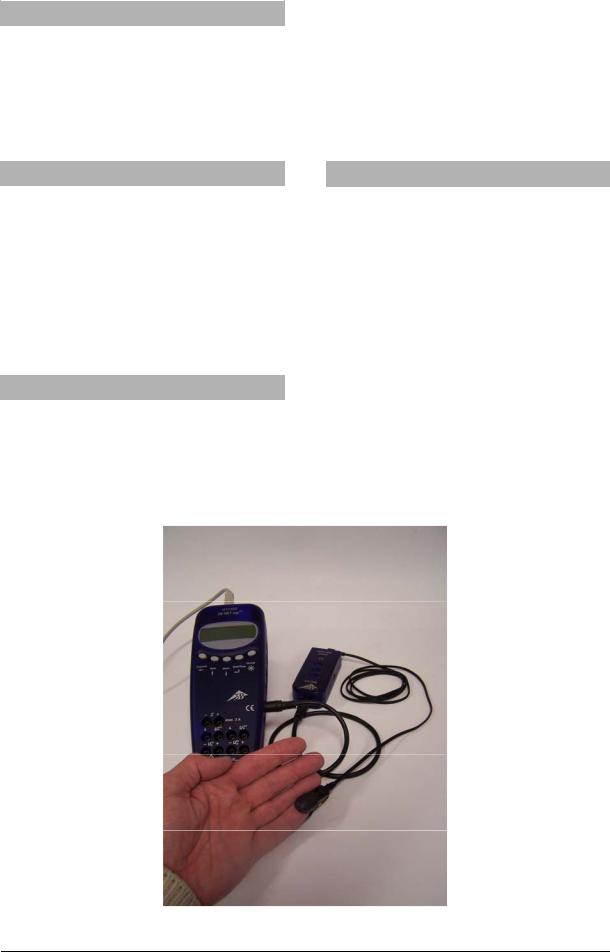3B Scientific Human Pulse Sensor Box User Manual

3B SCIENTIFIC® PHYSICS
Human Pulse Sensor Box U11392
Instruction sheet
03/08 Hh
1. Safety instructions
The human pulse sensor box is only intended for teaching purposes. The experimental data and recorder traces that are obtained must never be used for evaluating a person’s state of health.
•Do not use the pulse sensor box as a diagnostic instrument.
•Do not use the pulse sensor box as an instrument for monitoring the effects of therapeutic treatments.
•The pulse sensor box and the 3B NETlogTM must only be used with a PC that conforms to the CE specifications, and in particular to the European standard EN 69950.
•Do not open up or interfere with the pulse sensor box under any circumstances.
The human pulse sensor box is constructed in accordance with the current safety regulations of protection class II, classification BF (body, floating earth).
2. Description
Sensor box with attachable optical-electronic pulse detector (ear-clip consisting of an infra-red photoelectric sensor).
Provides automatic adjustment according to the signal strength (sensitivity adjustment) when measuring at the ear-lobes, at the base of the nail of the little finger, or on the surface of the skin between the thumb and forefinger.
The sensor box is detected automatically by the 3B NETlogTM unit.
3. Equipment supplied
1 Sensor box
1 Infra-red pulse detector, cable length 1.20 m 1 MiniDIN 8-pin connector cable, 600 mm long 1 Instruction sheet for U11392
1

4. Technical data
Measurement range: |
40–160 pulse beats/min |
Sensor type: |
Infra-red photoelectric |
|
sensor in transparent |
|
optical capsule |
Safety category: |
Protection class II, |
|
classification BF |
5.Instructions
•Place the sensor box near the person to be tested.
•Place the pulse detector on a part of the body with a strong flow of blood, e.g., an ear-lobe or the base of the nail of a little finger.
•During the measurement the person being tested should sit still or stand.
•Read off the sensor output voltage on the display of the 3B NETlogTM unit.
6.Applications
Measurements of pulse rate when resting or during physical activity.
Observing changes in pulse rate during a heated discussion.
Measuring the time for the pulse rate to return to the resting rate after physical activity.
Investigation of the pulse time difference at different positions in the body in relation to a reference measurement point, such as the base of the nail of a little finger. For this experiment use a second pulse sensor box and analyse the data using the 3B NETlabTM software
7. Sample experiment
Measuring the pulse rate of a human guinea pig
Equipment needed: |
|
|
1 |
3B NETlogTM |
U11300 |
1 |
3B NETlabTM |
U11310 |
1 |
Human pulse sensor box |
U11392 |
•Set up the experiment as shown in Fig. 1.
•Open the application program (template) for the experiment with the pulse sensor box on the 3B NETlabTM unit.
•Start the program and select the pulse rate function.
•On the trace obtained, use the two cursors to measure the time interval that covers about 20 pulse beats (fig. 2).
•Calculate the number of pulse beats per minute.
•Change the experimental conditions for the guinea pig and repeat the experiment.
Fig. 1 Measurement of a person’s pulse rate
2
